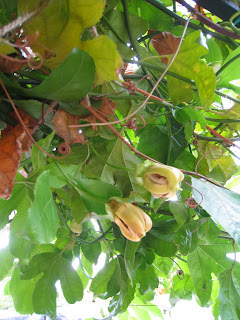
Australian native plants are one of the most diverse group of plants you could wish for. Bright and breezy colours, flowing or structural you name it they will provide a plant for you.

Grenvilles at left come in a wide range of colours and sizes. They sprawl, spread and grow tall and the birds love them. Many of the flowering gums seen here can enhance any backyard provided you choose a small species, which there are many.
 Australian natives need a natural to slightly acidic soil, they do not like nitrogen rich fertiliser, really they don't need much of anything. Most are water wise and respond to light pruning after flowering to keep them in shape. Pruning is best done in Autumn.
Australian natives need a natural to slightly acidic soil, they do not like nitrogen rich fertiliser, really they don't need much of anything. Most are water wise and respond to light pruning after flowering to keep them in shape. Pruning is best done in Autumn.  When choosing a plant think small as they will establish quicker and put on lots of growth come Spring.
When choosing a plant think small as they will establish quicker and put on lots of growth come Spring.
Want some structure, plant Banksias they not only provide beautiful floral arrangement but follow up with an impressive display of nuts.
Grasses look fantastic set amongst other exotics and sway gentle in the breeze creating a lovely effect between more structural plants like these conifers.
This is only the tip of the iceberg so go native and enjoy the delights of a beautiful low maintenance garden.
Happy gardening
Bronwyn
















































